Did you know that pepper plants belong to the same family as tomatoes and potatoes?
Pepper plants, scientifically known as Capsicum, come in a variety of shapes, sizes, and colors, and they are a popular choice for home gardeners and food enthusiasts alike. Whether you’re new to gardening or a seasoned pro, growing vibrant pepper plants in your garden can be a rewarding and delicious experience.
In this article, I will share my top tips on how to grow healthy and productive pepper plants. From selecting the right varieties to providing proper care, you’ll learn everything you need to know to achieve success with your pepper plants. So, let’s dive in and discover the secrets to growing vibrant peppers!
Key Takeaways:
- Pepper plants belong to the same family as tomatoes and potatoes.
- Growing pepper plants can be a rewarding and delicious experience.
- This article will provide top tips for growing healthy and productive pepper plants.
Starting Pepper Plants Indoors: The Key to Success
Starting your pepper plants indoors is a crucial step in ensuring a successful and abundant harvest. By providing the ideal conditions for germination and early growth, you can give your plants a head start and extend the growing season. In this section, I’ll guide you through the important aspects of starting pepper plants indoors, including the use of grow lights and the optimal timing for seed starting.
The Benefits of Starting Pepper Plants Indoors
Starting pepper plants indoors offers several advantages. Firstly, it allows you to control the growing environment, providing consistent temperature, humidity, and light conditions to promote healthy growth. Secondly, it gives you a head start on the growing season, allowing your plants to establish strong root systems and develop robust foliage before being exposed to outdoor elements.
Additionally, by starting your peppers indoors, you have greater flexibility in choosing pepper varieties that may have longer growing seasons or require warmer climates than your region offers. This expands the range of pepper plants you can grow and enjoy in your garden.
To successfully start your pepper plants indoors, you’ll need a few key tools and techniques:
- Seeds: Choose high-quality pepper seeds from reputable sources. Consider selecting a variety that suits your preferences and growing conditions.
- Seed starting containers: Use biodegradable pots, trays, or seedling trays with drainage holes to sow your pepper seeds.
- Grow lights: Supplemental lighting is essential for indoor seed starting, especially during the early stages of growth. Invest in full-spectrum fluorescent or LED grow lights to provide your seedlings with the optimal light intensity and spectrum.
- Seed starting mix: Opt for a well-draining seed starting mix to ensure proper moisture retention and aeration for the germinating seeds.
- Watering and temperature control: Maintain consistent moisture levels by watering your seedlings when the soil feels dry to the touch. Additionally, maintain a temperature range of 70-80°F (21-27°C) for optimal seed germination.
When to Start Pepper Plants Indoors
The timing for starting pepper plants indoors depends on the specific pepper variety and your region’s climate.
A general rule of thumb is to start pepper seeds indoors 8-10 weeks before the last expected frost date in your area. This allows sufficient time for the seeds to germinate, develop into healthy seedlings, and be ready for transplantation outdoors when the weather is favorable.
However, pepper plants are warm-season crops and require warm soil and air temperatures to germinate and grow. Therefore, it’s essential to consider the optimum temperature range for pepper seed germination, which is around 80-90°F (27-32°C).
If your local climate doesn’t provide these warm temperatures early in the growing season, you can use heating mats or warm locations in your home to create the ideal germination environment for your pepper seeds.
Note: Refer to the seed packet or the specific variety’s instructions for more accurate seed starting and transplanting timing guidelines.
Using Grow Lights for Pepper Plants
Providing adequate light is crucial for healthy growth and sturdy seedlings. While natural sunlight is ideal, it may not be sufficient or consistent during the seedling stage, especially in regions with limited sunlight or during winter months.
That’s where grow lights come in. By supplementing natural light with artificial grow lights, you can ensure your pepper seedlings receive the necessary intensity and spectrum for robust growth.
When using grow lights for pepper plants, position them about 6-12 inches (15-30 cm) above the seedlings and maintain a light cycle of 14-16 hours per day. As the seedlings grow taller, adjust the lights’ height to maintain an optimal distance for adequate light absorption.
Note: Different pepper varieties may have unique light requirements. Always refer to the seed packet or variety-specific information for the best lighting recommendations for your chosen pepper plants.
A Visual Guide: Starting Pepper Plants Indoors
| Materials and Equipment | Steps |
|---|---|
| Seeds | 1. Select high-quality pepper seeds based on your preferences and growing conditions. |
| Seed starting containers | 2. Fill biodegradable pots or seed trays with a well-draining seed starting mix. |
| Grow lights | 3. Position grow lights 6-12 inches above the seedlings and maintain a light cycle of 14-16 hours per day. |
| Watering and temperature control | 4. Water the seedlings when the soil feels dry to the touch and maintain a temperature range of 70-80°F (21-27°C). |
| Transplanting | 5. Once the seedlings have developed strong root systems and true leaves, transplant them outdoors after the last frost date in your area. |
Starting your pepper plants indoors is a rewarding and effective way to ensure their successful growth and productivity. By utilizing grow lights, proper timing, and the right techniques, you’ll have healthy seedlings that are ready for transplanting into your garden.
Choosing the Right Soil for Pepper Plants
Providing the ideal growing environment for your pepper plants is crucial to their success. One of the most important factors to consider is the type of soil you use. Pepper plants have specific soil requirements, both for starting seeds and for post-transplanting. By selecting the best soil and properly preparing it, you can create the ideal conditions for your plants to thrive and produce an abundant harvest.
When it comes to starting pepper plants from seeds, using a high-quality seed starting soil is essential. This type of soil is specifically formulated to provide the right balance of nutrients, moisture retention, and drainage for young seeds to germinate and establish strong root systems. Look for a seed starting soil that is lightweight, well-draining, and sterile to minimize the risk of disease and provide a clean environment for your seedlings to grow.
If you prefer to start your seeds in containers, using a potting soil mix that is suitable for peppers is essential. Potting soils are usually a blend of peat moss, perlite, and other organic matter that provide excellent drainage and aeration. Look for a potting soil mix specifically formulated for vegetables or peppers, as these will often contain added nutrients to support healthy plant growth.
Soil Preparation and Amending for Pepper Plants
Before transplanting your pepper seedlings or directly planting pepper plants, proper soil preparation and amending can greatly improve the growing conditions and overall health of your plants. Here are a few tips:
- Choose a well-draining location: Pepper plants prefer well-draining soil to prevent waterlogged roots. If your garden soil is heavy or has poor drainage, consider creating raised beds or mounds to improve the growing conditions.
- Test your soil pH: Pepper plants thrive in slightly acidic soil with a pH level between 6.0 and 6.8. Test your soil using a home testing kit or send a sample to a local extension service to determine its pH level. If necessary, adjust the pH by adding organic matter, such as compost or peat moss, to lower the pH or limestone to raise it.
- Amend with organic matter: Adding organic matter, such as compost or well-rotted manure, to your soil can improve its structure, moisture retention, and nutrient content. Work in a generous amount of organic matter into the top 6-8 inches of soil before planting.
- Consider adding additional nutrients: Pepper plants are heavy feeders and benefit from a nutrient-rich soil. Before planting, incorporate a balanced fertilizer or slow-release organic fertilizer into the soil per the package instructions.
By following these soil preparation and amending tips, you can create the optimal growing conditions for your pepper plants. Remember to monitor the moisture levels regularly and adjust watering as needed to prevent overwatering or drying out.
Now that you know how to choose the right soil and prepare it for your pepper plants, you’re one step closer to growing healthy and productive peppers. In the next section, we’ll explore the importance of selecting the perfect pot for your pepper plants when growing them in containers.
Selecting the Perfect Pot for Pepper Plants
If you’re growing pepper plants in containers, choosing the right pot size is crucial for their success. Pepper plants need ample space for their roots to grow and establish a strong foundation. To determine the best pot for your pepper plants, consider the following factors:
- Pot size: The size of the pot directly affects the growth and productivity of your pepper plants. A pot that is too small can restrict root development, leading to stunted growth and lower yields. For optimal results, choose a pot that provides at least 5 gallons of capacity for each pepper plant.
- Drainage: Proper drainage is essential for the health of your pepper plants. Ensure that the pots you choose have drainage holes to prevent waterlogged soil, which can lead to root rot and other problems.
- Material: Select pots made of durable materials such as ceramic, plastic, or terracotta. These materials provide good insulation, retain moisture, and resist damage from weather conditions.
When growing peppers in containers, it’s also important to consider the number of plants you’ll be growing and the available space. If you have limited space, compact and dwarf varieties are excellent choices. These varieties are bred to grow in smaller containers and still produce abundant fruit.
Pro Tip: If you’re unsure about the pot size, it’s always better to go bigger rather than smaller. This allows your pepper plants to have ample room for root growth and reduces the risk of overcrowding.
Now that you know the key factors to consider when selecting a pot for your pepper plants, let’s take a look at some recommended pot sizes:
| Pot Size | Number of Pepper Plants |
|---|---|
| 5 gallons | 1 plant |
| 10 gallons | 2-3 plants |
| 15 gallons | 4-5 plants |
Remember, these are general guidelines, and you can adjust the pot size based on the specific needs of your pepper plants and the available space. By providing your peppers with the right pot size, you’ll create a conducive environment for their growth and maximize their yield.
Nurturing Pepper Plants with Proper Watering and Fertilizing
Properly caring for your pepper plants through watering and fertilization is crucial for maintaining their health and achieving optimal growth. In this section, I’ll guide you through the best practices for watering your pepper plants and provide recommendations for choosing the right fertilizer and fertilizing schedule to ensure vigorous growth and bountiful harvests.
Optimal Watering Techniques
When it comes to watering your pepper plants, finding the right balance is key. Overwatering can lead to root rot and other water-related issues, while under-watering can stunt plant growth and reduce fruit production. Follow these tips to ensure proper hydration for your pepper plants:
- Water deeply: Give your pepper plants a thorough watering, ensuring that the water reaches the root zone.
- Avoid frequent shallow watering: Instead of watering your plants lightly every day, it’s better to provide a deep watering session every few days. This encourages the roots to grow deeper, making the plants more resilient to drought conditions.
- Check the soil moisture: Before watering, assess the moisture level of the soil. Stick your finger about an inch into the soil to determine if it’s dry or moist. Water only when the top inch of soil feels dry to the touch.
- Water in the morning: Water your pepper plants in the early morning to allow sufficient time for the foliage to dry before evening. This helps prevent diseases caused by prolonged moisture on the leaves.
By following these optimal watering techniques, you can keep your pepper plants hydrated without risking water-related problems.
Choosing the Right Fertilizer and Fertilizing Schedule
Providing your pepper plants with the right nutrients is essential for their growth and fruit production. Here are some guidelines to help you choose the best fertilizer and establish a fertilizing schedule:
- Select a balanced fertilizer: Look for a fertilizer with an NPK ratio (nitrogen, phosphorus, and potassium) of 10-10-10 or 20-20-20. This ensures a good balance of essential nutrients for your pepper plants.
- Consider organic options: If you prefer organic gardening, choose organic fertilizers high in nitrogen, phosphorus, and potassium.
- Apply fertilizer at planting: Mix a slow-release fertilizer into the soil when planting your pepper plants. This provides a steady supply of nutrients as the plants grow.
- Follow a fertilizing schedule: Once your pepper plants are established, apply fertilizer every 4-6 weeks throughout the growing season. Be sure to follow the recommended dosage on the fertilizer packaging.
Remember to water your pepper plants well before applying fertilizer to prevent root burn. Applying fertilizer to wet soil allows the nutrients to penetrate the root zone effectively.
Nurturing your pepper plants with proper watering and fertilizing techniques is key to growing healthy, productive plants. By following the optimal watering tips and selecting the right fertilizer and fertilizing schedule, you’ll set your pepper plants up for success. In the next section, I’ll explain the benefits of pruning pepper plants and provide step-by-step instructions on how to prune them for maximum yield.
Pruning Pepper Plants for Maximum Yield
Pruning pepper plants is a key technique that can significantly increase their yield and promote overall plant health. When done correctly, pruning helps redirect the plant’s energy into fruit production and encourages the growth of strong, robust branches.
The benefits of pruning pepper plants include:
- Promoting better air circulation and reducing the risk of disease
- Increasing sunlight exposure to the lower branches, leading to more uniform ripening of fruits
- Removing weak or damaged branches that can drain the plant’s resources
- Controlling the size and shape of the plant for easier maintenance and harvesting
How to Prune Pepper Plants
To properly prune your pepper plants, follow these step-by-step instructions:
- Start pruning when the plants have grown to a height of 12-18 inches and have developed at least 6-8 sets of true leaves.
- Identify the main stem, which is the central and thickest stem of the plant.
- Inspect the plant for suckers, which are the small shoots that grow from the leaf axils (the point where a leaf attaches to the stem).
- Using clean and sharp pruning shears, carefully remove the suckers by making clean cuts close to the main stem.
- Continue to periodically remove any new suckers that emerge as the plant grows, focusing on maintaining one or two main stems.
- If desired, shape the plant by selectively pruning the upper branches to achieve a more compact and bushy form.
Remember to always sanitize your pruning tools before and after each use to prevent the spread of diseases.
“Pruning pepper plants helps optimize their growth and productivity, resulting in healthier plants and a more abundant harvest.” – [Expert Gardener]
Pruning Dos and Don’ts
| Do | Don’t |
|---|---|
| Prune regularly to remove suckers and maintain a focused energy on fruit production. | Prune excessively, as it can limit the plant’s ability to photosynthesize and reduce overall yield. |
| Use clean and sharp pruning shears to make precise cuts. | Use dull or dirty pruning tools that can damage the plants and introduce infections. |
| Prune in the early morning or late afternoon to minimize stress on the plant. | Prune during the hottest part of the day, as it can lead to excessive moisture loss and stress. |
| Monitor the plants for any signs of stress or disease after pruning and provide necessary care. | Ignore the plants after pruning without observing their response and adjusting care accordingly. |
By following these pruning techniques, you’ll be able to maximize the yield of your pepper plants and enjoy a bountiful harvest of delicious peppers.
Protecting Pepper Plants from Pests and Diseases
Pepper plants are no strangers to pests and diseases that can impact their growth and productivity. It’s essential to be aware of these common problems and take preventive measures to ensure the health and well-being of your pepper plants. By implementing effective pest control strategies and practicing good gardening habits, you can safeguard your pepper plants from harm and maintain a thriving garden.
Common Pests in Pepper Plants
Pepper plants can fall victim to various pests that can attack their foliage, stems, and fruits. Some of the most common pests that affect pepper plants include:
- Aphids
- Flea beetles
- Spider mites
- Whiteflies
- Thrips
These pests feed on the leaves and sap of pepper plants, which can lead to stunted growth, discoloration, and distorted fruit development. It’s crucial to regularly inspect your plants for signs of infestation and take prompt action to prevent the problem from escalating.
Pest Prevention and Control
Preventing pests from infesting your pepper plants is the first line of defense. Here are some tips for effective pest control:
- Keep your garden clean and tidy: Remove any plant debris, fallen leaves, or weeds that can serve as hiding places or breeding grounds for pests.
- Practice crop rotation: Avoid planting peppers in the same spot year after year to reduce the risk of pest build-up in the soil.
- Use companion planting: Planting pest-repellent herbs, such as basil, mint, and marigold, near your pepper plants can help deter pests.
- Apply organic insecticides: If pests become a problem, consider using organic insecticides, such as neem oil or insecticidal soap, following the instructions on the product label.
- Introduce natural predators: Encourage beneficial insects, such as ladybugs or lacewings, that feed on pests to help control their population.
Common Diseases in Pepper Plants
Pepper plants are susceptible to several diseases that can weaken their immune system and compromise their growth. Some of the most common diseases affecting pepper plants include:
- Bacterial spot
- Verticillium wilt
- Fusarium wilt
- Phytophthora blight
- Anthracnose
These diseases can cause wilting, yellowing of leaves, fruit rot, and overall decline in plant health. It’s important to take preventive measures to minimize the risk of disease and promptly address any signs of infection.
Disease Prevention and Control
Preventing the onset and spread of diseases is crucial for maintaining healthy pepper plants. Here are some preventive measures and control strategies:
- Practice proper sanitation: Remove and destroy any infected plant material to prevent the spread of diseases.
- Avoid over-watering: Excess moisture can create favorable conditions for disease development, so water your plants at the base and avoid wetting the foliage.
- Provide adequate spacing: Plant your pepper plants with enough distance between them to promote air circulation, which can reduce the risk of fungal diseases.
- Apply fungicides: If diseases persist or become severe, consider using fungicides labeled for pepper plants according to the manufacturer’s instructions.
Remember to regularly monitor your pepper plants for any signs of pest or disease issues. Early detection and intervention are crucial in preventing significant damage and ensuring the overall health of your plants.
| Pest | Disease |
|---|---|
| Aphids | Bacterial spot |
| Flea beetles | Verticillium wilt |
| Spider mites | Fusarium wilt |
| Whiteflies | Phytophthora blight |
| Thrips | Anthracnose |
Maximizing Pepper Plant Sunlight and Heat Exposure
Providing your pepper plants with optimal sunlight and heat exposure is crucial for their growth and fruit production. By following the best practices outlined below, you can ensure that your pepper plants thrive in your garden and produce abundant harvests.
Proper Positioning
The first step in optimizing sunlight and heat exposure for your pepper plants is proper positioning. Choose a location in your garden that receives at least six to eight hours of direct sunlight each day. Pepper plants need ample sunlight to photosynthesize and produce energy for growth.
Ensure that your pepper plants are not shaded by taller plants or structures. Position them in a way that allows them to receive direct sunlight throughout the day. Remember, sunlight is essential for pepper plants to develop strong roots, healthy foliage, and ultimately, a bountiful harvest.
Shading Techniques
While pepper plants require substantial sunlight, extreme heat can sometimes be detrimental to their growth. In regions with scorching summer temperatures, you can employ shading techniques to protect your plants from excessive heat.
Consider using shade cloth or constructing temporary shade structures to provide relief from intense sunlight. This will help prevent heat stress, sunburn, and dehydration in your pepper plants. Additionally, shading techniques can help maintain an optimal temperature range for their growth.
Adjusting Exposure
As the weather conditions change throughout the season, it’s important to monitor and adjust the exposure of your pepper plants to sunlight and heat. Some pepper varieties thrive in hotter climates, while others prefer slightly cooler conditions. Knowing the heat requirements of your specific pepper plants will help you optimize their growth.
Pay attention to weather forecasts and make necessary adjustments to protect your plants from extreme heat or cold spells. Providing shade during the hottest parts of the day and ensuring adequate air circulation can help regulate temperatures and create a favorable environment for your pepper plants.
The Importance of Sunlight and Heat
Optimizing sunlight and heat exposure for your pepper plants is crucial for their overall health and productivity. Sunlight promotes photosynthesis, which is essential for energy production and plant growth. Adequate heat allows pepper plants to thrive, aiding in nutrient absorption, metabolism, and fruit development.
By implementing these practices and ensuring optimal sunlight and heat exposure, you can maximize the growth and productivity of your pepper plants. Remember, healthy and robust pepper plants will reward you with a bountiful harvest of flavorful peppers.
| Optimization Methods | Description |
|---|---|
| Proper Positioning | Choose a sunny spot with at least 6-8 hours of direct sunlight each day. |
| Shading Techniques | Protect plants from extreme heat using shade cloth or temporary structures. |
| Adjusting Exposure | Monitor weather conditions and make necessary adjustments to maintain ideal temperature range. |
Transitioning Pepper Plants Outdoors: Hardening Off Tips
Transitioning pepper plants from indoor to outdoor environments requires a gradual process known as hardening off. This acclimation period allows the plants to adjust to the differences in temperature, sunlight, and wind they will encounter outdoors. By following the recommended schedule and implementing these hardening off tips, you can ensure a successful transition for your pepper plants.
Understanding the Hardening Off Process
Hardening off is the process of gradually exposing plants to outdoor conditions to prevent shock and stress. It prepares them for the harsher environment outside the controlled indoor setting. This gradual transition helps the plants develop stronger stems, thicker leaves, and the ability to withstand temperature fluctuations.
Here are some key steps to follow when hardening off your pepper plants:
- Start slow: Begin the hardening off process when outdoor temperatures are consistently above 50°F (10°C) during the day.
- Begin with short durations: Place your pepper plants outdoors for only a few hours each day during the first week.
- Choose mild weather days: Avoid exposing your plants to extreme heat, cold, or strong winds during the initial stages of hardening off.
- Gradually increase exposure: Each day, extend the duration of outdoor exposure by an hour or two.
- Monitor weather conditions: Check the weather forecast regularly and protect your plants from unexpected adverse conditions.
- Protect from direct sunlight: Initially, provide some shade or use a shade cloth to protect your plants from intense sunlight.
- Move to permanent outdoor location: After 7-10 days of gradually increasing exposure, your pepper plants will be ready for transplanting into their permanent outdoor location.
Hardening Off Schedule
| Day | Duration of Outdoor Exposure | Protection |
|---|---|---|
| 1 | 2 hours | Partial shade or shade cloth |
| 2 | 4 hours | Partial shade or shade cloth |
| 3 | 6 hours | Partial shade or shade cloth |
| 4 | 8 hours | Partial shade or shade cloth |
| 5 | 10 hours | Partial shade or shade cloth |
| 6 | 12 hours | No protection needed |
| 7 | Extended overnight exposure | No protection needed |
Following this schedule will help your pepper plants adapt to the outdoor environment and minimize the risk of transplant shock.
Remember, the hardening off process is essential for the survival and success of your pepper plants. Skipping this step can lead to stunted growth, leaf damage, and reduced fruit production. Take the time to properly acclimate your plants for a rewarding harvest.
Transitioning your pepper plants outdoors is an exciting step towards watching them flourish in the garden. By gradually exposing them to outdoor conditions through the hardening off process, you can ensure their resilience and vitality. Follow these tips and schedule to give your pepper plants the best start in their permanent outdoor growing space.
The Best Pepper Plant Varieties for Beginners
If you’re new to growing pepper plants, selecting the right varieties can make a significant difference in your success. It’s important to choose pepper plants that are easy to grow, resilient, and beginner-friendly. With these varieties, you can enjoy a successful pepper-growing experience.
1. Jalapeno
One of the most popular pepper varieties for beginners is the Jalapeno pepper. It’s known for its medium heat level and versatility in the kitchen. Jalapeno plants are easy to grow and produce a high yield of flavorful peppers.
2. Banana Pepper
Banana peppers are another excellent choice for beginner gardeners. These mild and sweet peppers are great for adding a pop of color to salads, sandwiches, and pizza. They are low-maintenance and have a high success rate in gardens.
3. Sweet Bell Pepper
Sweet bell peppers are a classic choice for beginners. They come in various colors, such as red, yellow, and green, and have a crisp, sweet flavor. Bell pepper plants are relatively easy to grow, making them a great option for novice gardeners.
4. Poblano Pepper
The Poblano pepper is a mild chili pepper with a rich, earthy flavor. It is commonly used in Mexican cuisine and is ideal for stuffing or roasting. Poblano plants are generally low-maintenance and can tolerate a wide range of growing conditions.
5. Cayenne Pepper
Cayenne peppers are known for their fiery heat and bold flavor. They are commonly used in spicy dishes and sauces. Despite their hotness, Cayenne pepper plants are relatively easy to care for and can be grown successfully by beginner gardeners.
By choosing these easy-to-grow pepper plants, you’ll have a great starting point for your pepper-growing journey. Remember to provide them with proper care, including adequate sunlight, water, and fertilization. With a little patience and attention, you’ll be rewarded with a bountiful harvest of fresh and flavorful peppers.
Conclusion
After reading this article and following the tips and guidelines provided, you are well-equipped to grow vibrant pepper plants and maximize their yield. From starting your plants indoors to selecting the right soil and pot, caring for your plants with proper watering, fertilizing, and pruning, and protecting them from pests and diseases, every step is crucial in ensuring the successful growth of your pepper plants.
By dedicating the necessary attention and care, you will soon be rewarded with healthy plants that bear an abundant harvest. Remember to provide optimal sunlight and heat exposure, as well as gradually transition your plants outdoors through the hardening off process. These practices, combined with the right choice of pepper plant varieties, will set you on the path to becoming a successful pepper grower.
So, put on your gardening gloves and get ready to embark on an exciting pepper-growing journey. With a little patience and TLC, you’ll be enjoying the delicious fruits of your labor in no time. Happy growing!

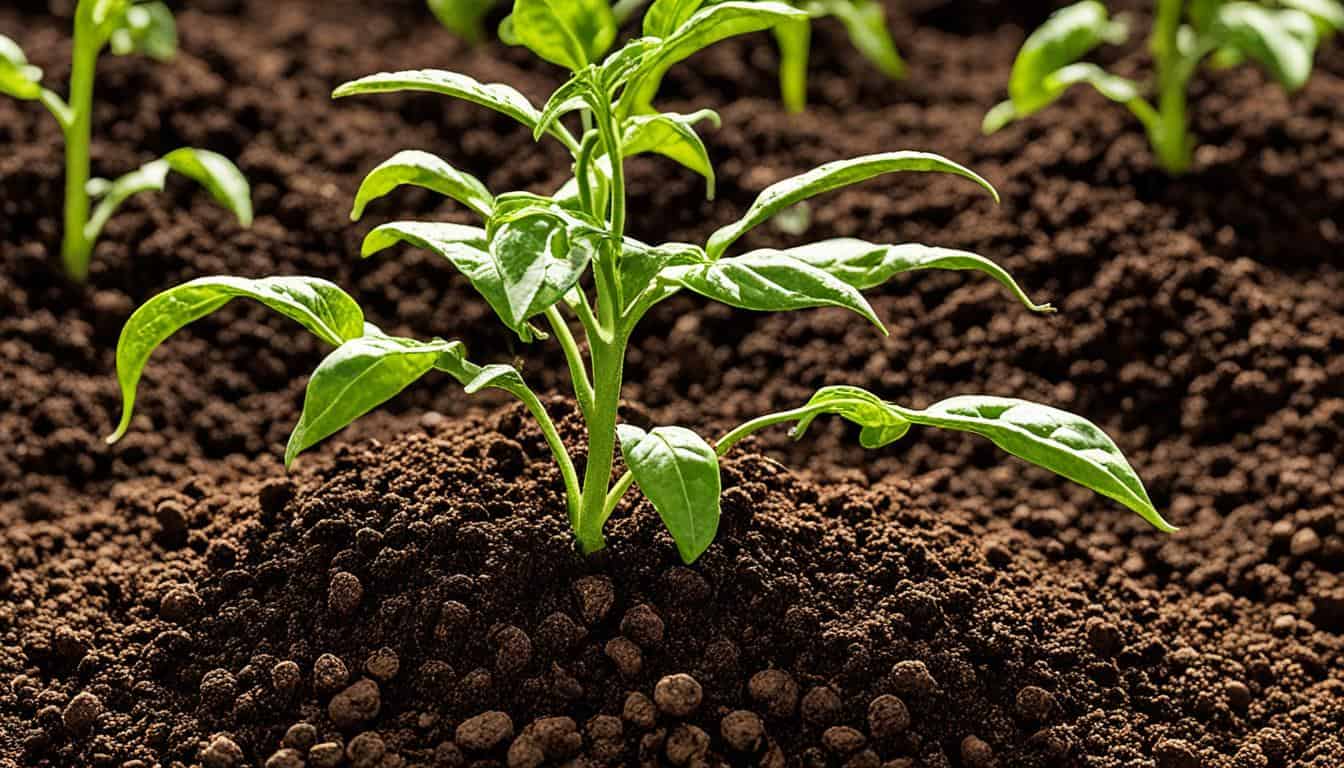
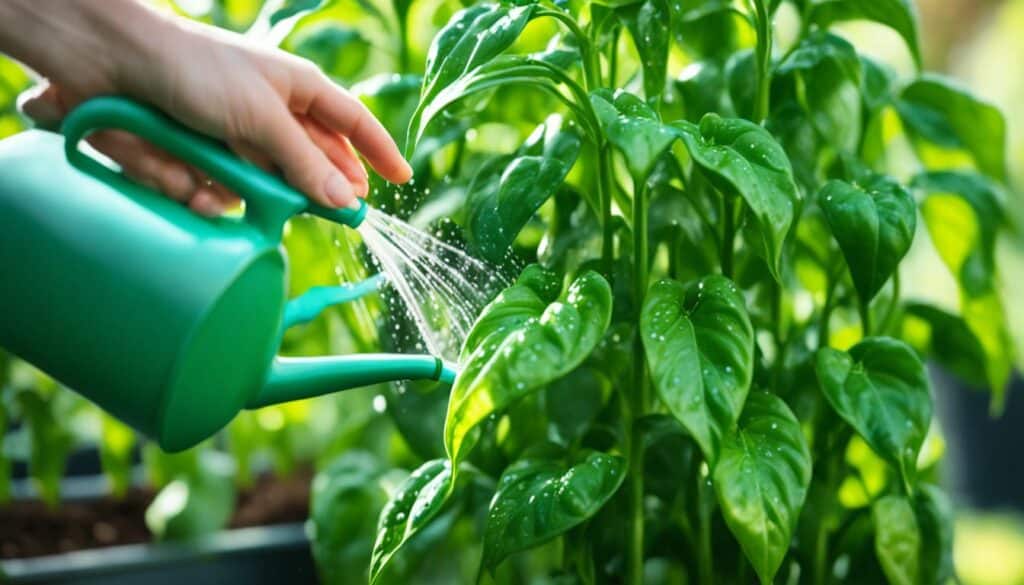
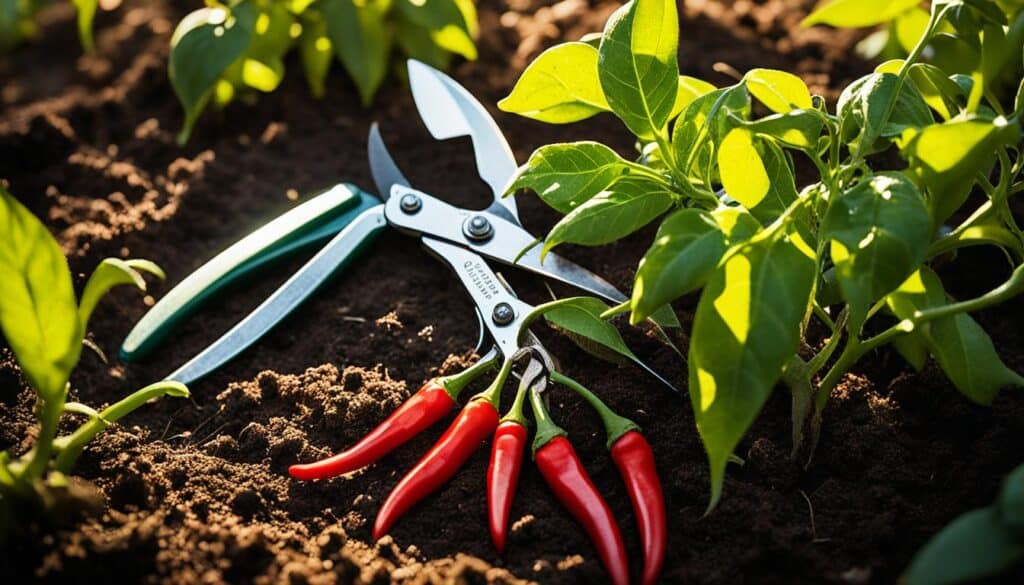
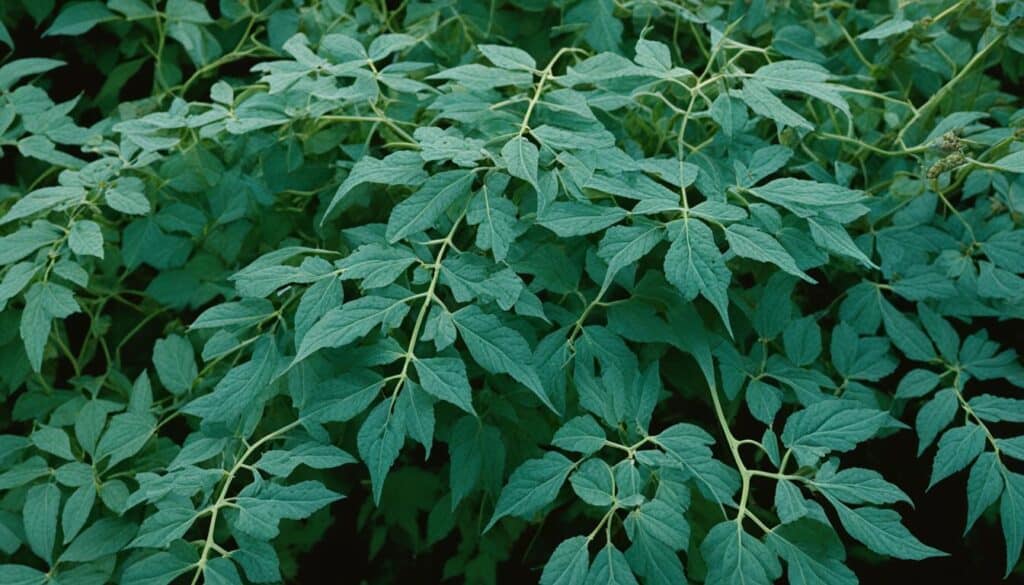
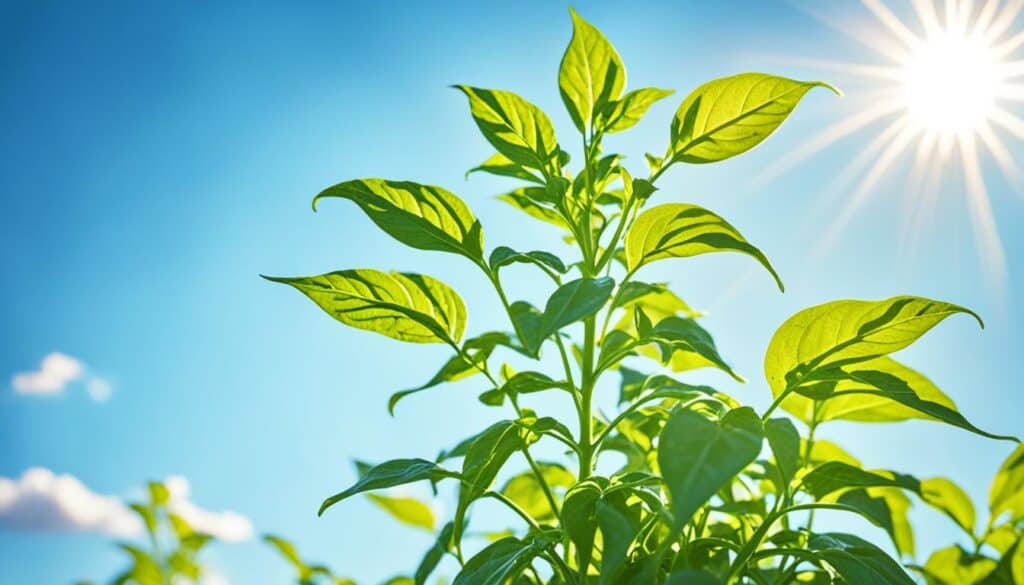
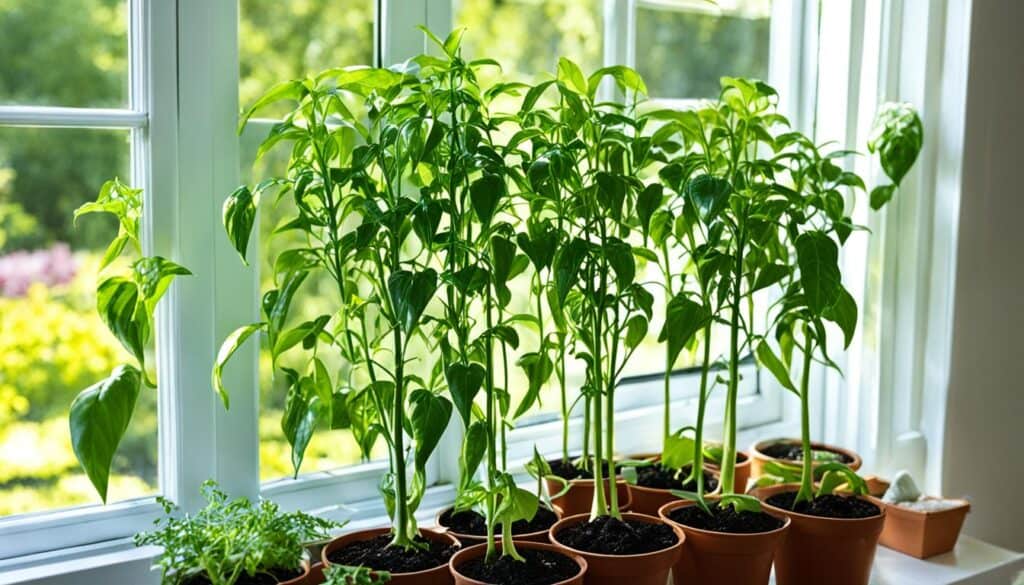



Leave a Reply